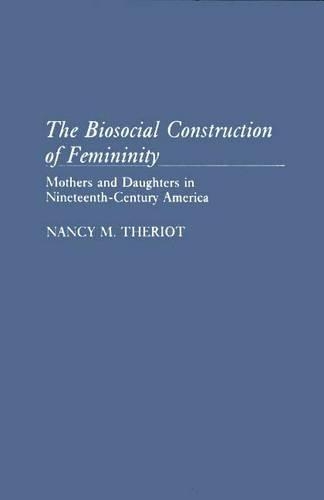
The Biosocial Construction of Femininity: Mothers and Daughters in Nineteenth-Century America
(Hardback)
Publishing Details
The Biosocial Construction of Femininity: Mothers and Daughters in Nineteenth-Century America
By (Author) Nancy Theriot
Bloomsbury Publishing PLC
Praeger Publishers Inc
6th May 1988
United States
Classifications
Tertiary Education
Non Fiction
305.420973
Physical Properties
Hardback
168
Description
How did 19th-century women determine what behaviors and attitudes constituted femininity, and how did one generation pass on to another those social attitudes and adaptations deemed proper and necessary for womankind Theriot argues convincingly that women themselves were the agents in the formation of attitudes about gender. . . . This book would be difficult for readers not familiar with some aspects of women's studies, but is an important and perceptive examination of the effect of sexual ideology. Choice This study focuses on feminine ideology and middle-class women's reproductive experience in nineteenth-century America. Using nineteenth-century popular literature written by women, medical literature, and autobiographies, this fascinating work offers a theoretical framework for viewing gender as a historical process and women as agents in gender formation. It discusses the relationship between sexual ideology and women's material lives, and their role in the creation and evolution of femininity, explaining what the author perceives as the generational interconnection of body experience, sexual ideology, and feminine consciousness. By analyzing the link between the external and internal dimensions of women's world through the application of phenomenological and social psychological methodology to historical materials, Theriot suggests a framework for understanding the relationship of female body and feminine ideology and for viewing the mother/daughter dyad as central in women's personal and collective history.
Reviews
How did 19th-century women determine what behaviors and attitudes constituted femininity, and how did one generation pass on to another those social attitudes and adaptations deemed proper and necessary for womankind Theriot (University of Louisville) argues convincingly that women themselves were the agents in the formation of attitudes about gender. In the early 1800s, women accepted a definition of feminine as one of debility and weakness. The imperial mother centered her life work around notions of sacrificing and suffering motherhood. Defined by sexuality and reproduction, "woman's lot" was regarded as being more miserable than that of men. From this thesis of suffering, however, the daughters of these women chose a new synthesis. More able to control the number of children and faced with different economic conditions, the second generation found themselves challenging the original script. Interestingly enough, one of their adaptations was an epidemic of psychosomatic illnesses virtually identical to the anorexia nervosa prevalent almost 100 years later. Upper-division undergraduates and above.-Choice
"How did 19th-century women determine what behaviors and attitudes constituted femininity, and how did one generation pass on to another those social attitudes and adaptations deemed proper and necessary for womankind Theriot (University of Louisville) argues convincingly that women themselves were the agents in the formation of attitudes about gender. In the early 1800s, women accepted a definition of feminine as one of debility and weakness. The imperial mother centered her life work around notions of sacrificing and suffering motherhood. Defined by sexuality and reproduction, "woman's lot" was regarded as being more miserable than that of men. From this thesis of suffering, however, the daughters of these women chose a new synthesis. More able to control the number of children and faced with different economic conditions, the second generation found themselves challenging the original script. Interestingly enough, one of their adaptations was an epidemic of psychosomatic illnesses virtually identical to the anorexia nervosa prevalent almost 100 years later. Upper-division undergraduates and above."-Choice
Author Bio
NANCY M. THERIOT is Assistant Professor of History at the University of Louisville, Kentucky.
